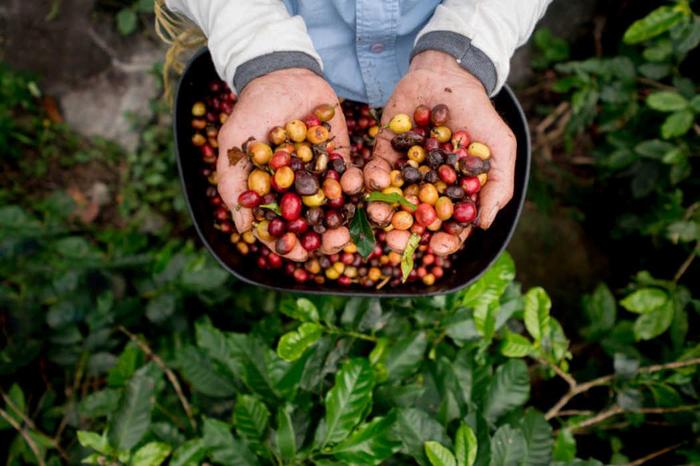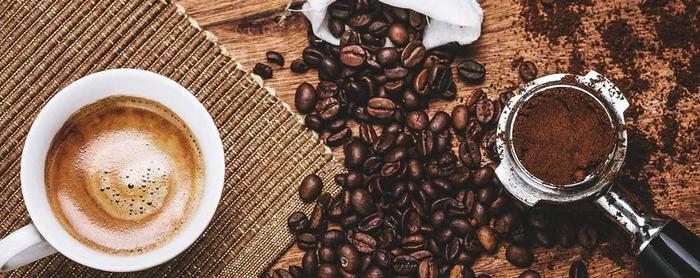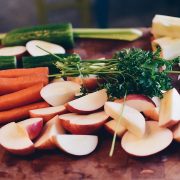Speciality Coffee Subscription Delivered Monthly
Are you familiar with the term speciality coffee? In order to earn the speciality title, producers have to meet a long list of criteria. There’s a reason why this beverage tastes differently almost every time you have a cup.

Coffee variants aren’t grown, harvested, processed, roasted, or brewed in the same way. Speciality coffee places the sole focus on consistency, quality, transparency, and sourcing. Consumers are informed on where the species comes from, how it was sourced and processed. Arabica and Robusta are the most popular gourmet varieties available worldwide.
Nowadays, speciality coffee subscription services are available on a monthly basis.
The following information will introduce you to everything you need to know on this topic.
What is speciality coffee?
It’s a term used to define coffee with no Quakers and primary defects, which has been sized and dried properly. Its quality must be sufficiently high to pass grading tests and achieve scores higher than eighty points out of 100. Such a speciality grade is only achieved by ten percent of all coffee produced worldwide.
The score is determined through expert tasting, which is known as cupping. Nevertheless, before reaching this stage, coffee is evaluated in its unroasted, green form. The job of graders is to look for defects, as well as assess their odour and colour.
During the cupping process, graders evaluate the aroma and flavour qualities by adhering to a set of specific protocols. The environment where cupping occurs is strictly regulated in terms of noise, light, and cleanliness in order not to obstruct the ability of graders to assess its quality.
Coffee used during the cupping process should be roasted no longer than 24 hours prior to the evaluation to a specific level. The roasting process should last anywhere between eight and twelve minutes. Numerous aspects are factored in during the process of cupping, including the grind size, brew time, temperature, and water amount.

A minimum of five samples should be provided for the cupping process, which graders assess based on their flavour, aftertaste, body, balance, acidity, sweetness, and uniformity. All scores are then summed up to calculate the total score, which should exceed eighty points to be classified as speciality coffee. In terms of species, any coffee can be characterized as a speciality as long as it exceeds the threshold of eighty points.
Generally, the largest part of gourmet coffee is comprised of Arabica species, as these account for approximately sixty per cent of global coffee production. The most popular varieties are Bourbon, Gesha, Typica, and hundred others. Although Arabica species account for seventy per cent of coffee production, the effort to create Robusta of high quality is gradually increasing. Read here about the history, cultivation, taxonomy, strains, and distribution of Arabica.
Robusta vs Arabica
Robusta coffee is produced from the beans of the Coffea canephora plant, accounting for forty percent of the global production. The largest growing regions of Robusta are Indonesia and Africa, particularly Vietnam. It has an earthy and bitter taste with an aftertaste that resembles a peanut. Robusta beans contain less sugar and more caffeine compared to Arabica, which explains the harsher taste.
Additionally, Robusta is used for espresso due to the flavour and thick crema it provides to this beverage. The Robusta plant is highly resilient in terms of withstanding hot temperatures over thirty degrees, but it has to stay hydrated. It’s highly resistant to disease and insects, growing up to ten meters in height.

The amount of caffeine in Robusta is almost twice the caffeine amount in Arabica. The former has between 2.2 and 2.7 per cent of caffeine, whereas the latter has only 1.2 to 1.5 per cent. The high caffeine content is what makes the Robusta plant less prone to disease and pests. Pests aren’t very fond of the bitter taste.
The largest Robusta producers on a worldwide level include Vietnam, Brazil, Indonesia, India, Uganda, Malaysia, Thailand, Cameroon, Philippines, Madagascar, etc. There are various differences between Robusta and Arabica. For instance, the former has to be cross-pollinated, whereas the latter is self-pollinating. Britannica.com explains the benefits of cross-pollination.
Furthermore, it produces fruit in approximately two years, whereas Arabica needs about four years to produce the same fruit. The taste of both species is different, as Arabica doesn’t taste as bitter as Robusta. The bitter taste mainly originates from the high caffeine content of the latter, which also contains more chlorogenic acid.
The cost of Arabica is higher, as it produces less and matures more slowly. The leaves of Arabica are smaller, and it’s mainly grown in South America. Arabica differs in the number of chromosomes as well, as it has forty-four compared to twenty-two chromosomes in Robusta.

What makes speciality coffee better than the commercial variants is the dedication in every step of the production process, from cherry-picking to roasting. Cherry-picking refers to the process of harvesting the ripest red cherries on farms. Growers place the focus on picking just the cherries of the highest quality.
Moreover, cherries don’t all ripen at the same time, which makes the harvesting process rather selective. Quality matters much more than quantity. Conversely, commercial coffee is produced from plants that are stripped mechanically once the largest number of cherries are ripe. As a result, there is a mix of cherries from different maturity stages.
Once the cherry-picking process is finished, the following step is processing, which is of crucial importance for the ultimate quality. Cherries are sorted by skilled workers removing any leaves and twigs that might have found their way into the baskets. There are three ways of cherry processing that farmers rely on, including the washed, semi-washed, and natural processes.
During washed processing, cherries are removed, after which the beans are dried. By avoiding or controlling fermentation, the unique flavours of coffee are obtained. Although it requires plenty of water, it’s the most effective method of processing in the world.
In the course of natural processing, cherries are left to ferment before removing the casing and separating the beans. Fermentation provides the coffee with some fruity flavour coming from the cherry. These processes take between two and four weeks to complete, which affects the final taste.
The following step is green bean selection, taking place after three months of allowing beans to rest in their parchment. Parchment refers to the protective layer of the bean that gets removed in order to keep selecting the beans by hand. Such a selection process is performed for checking defects like sour or black beans, insect damage, etc.
In a large number of countries, the beans are then sorted by size as an indispensable part of the sorting process. They are first graded on the basis of their appearance while searching for physical defects. If there are too many defects, the coffee won’t be even considered for speciality grading. After the beans have been subjected to physical inspection, it’s time for cupping, which is the name for the first tasting.
The coffee is roasted lightly and then tested to detect any defects related to the flavour. In order to achieve more than eighty points on the grading scale, speciality coffee shouldn’t be too bitter, earthy, or unbalanced in taste. There’s supposed to be at least one unique aroma for the species to be considered gourmet. Coffee beans undergo second cupping once they arrive at the final destination. If they somehow get damaged during the trip, then it won’t be given the attribute speciality.
Therefore, the shipping process is imperative in preserving the quality of the beans. Commercial variants aren’t shipped very carefully. They are mainly delivered in yute bags with no internal covering. It often happens for containers to be overfilled, which causes mould, condensation, and other types of defects during the long voyage from Africa or South America to Europe.
The best way to protect the labour invested by farmers is by shipping speciality coffee in special bags to further protect them from moisture and humidity. Once the bags eventually arrive at their destination, the process of second cupping takes place. During this process, the beans that have undergone too much deterioration are no longer classified as speciality and sold as commercial.
The next phase of the process is called roasting. Speciality coffee variants should be roasted lighter than commercial variants to retain as much of the original flavour as possible. Dark roasts are known to burn off the bad taste in the beans, along with the good notes. Hence, they shouldn’t be over-roasted to preserve the lovely aroma. If roasted improperly, their quality will be downgraded.
Certified roasters have to complete numerous hours of coursework to gain enough experience for mastering various roast profiles. Beans are attentively monitored in every stage of the roasting process to make sure they reach the desired quality standards. Gourmet variants mainly come from a single farm or single estate.
How does a subscription program work?

Lovers of this beverage can subscribe to a monthly program of speciality coffee delivery. It means you no longer have to worry about running out of fresh coffee. Every month, you’ll receive a package on your doorstep without having to run to the store. Cancelling the subscription can be easily done at any time, as you only need to get in touch with the supplier before the date of renewal.
Nevertheless, if you aren’t satisfied with the variant you subscribed to, you can change to another variant by changing the subscription through an email or phone call. The usual delivery time is between two and three working days. It’s normal for orders to take longer to arrive during busy periods of the year, such as Christmas.
Moreover, shipping costs are usually calculated based on the coffee amount you order. If you wish to try the product before making a purchase, most brands offer gift boxes that contain a few sample bags. Once you find the taste you prefer, you can opt for a monthly subscription service of whole bean or ground coffee.
The bottom line
If you adore the taste and aroma of this beverage, gourmet coffee is the one to try. It provides a wide array of rich and distinctive flavours!








